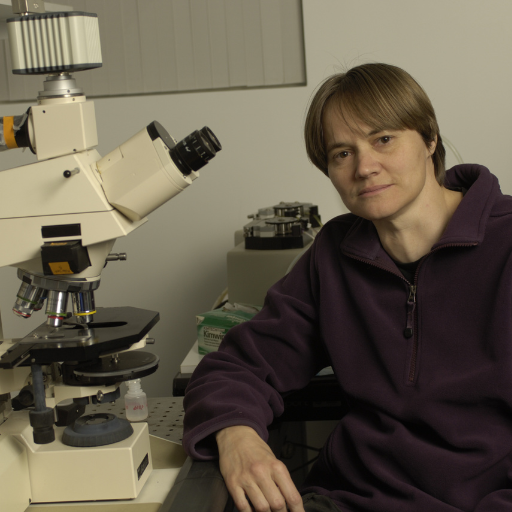Molecular Genetics Study of Primary Open Angle Glaucoma

About the Research Project
Program
Award Type
Standard
Award Amount
$50,000
Active Dates
April 01, 1996 - March 31, 1998
Grant ID
G1996414
Summary
Glaucoma is a leading cause of blindness worldwide and the second leading cause of blindness in the United States. About 80,000 of the 2,000,000 affected Americans are blind from glaucoma. The natural history of glaucoma is damage to the optic nerve, resulting in progressive loss of the visual field which can lead to blindness. The most common form of the disease is primary open-angle glaucoma (POAG), characterized by onset in middle age or later, elevated intraocular pressure, an open anterior chamber angle, and damage to the optic disk and visual field. Major identified risk factors for glaucoma are elevated intraocular pressure, increasing age, African ancestry, and family history. Genetic studies provide complex findings suggesting that there is no single glaucoma gene. Because as many as half of the individuals affected with glaucoma do not know that they are affected there is a great need to develop presymptomatic testing. There is also a great need to identify the underlying causes so that therapies can be directed at the causes rather than at the secondary effects of the disease. The long-term goals of this project include genetic mapping and cloning of one or more genes in which mutations can lead to primary open angle glaucoma, a major blinding eye disease with onset in adults. The search for genes responsible for adult onset glaucoma are complicated by limited numbers of scorable meioses per family, problems of missing information, difficulties of diagnostic assignments, possibilities of phenocopies in such a common disease, uncertainties about mode of inheritance, and problems with analysis of pooled data. In spite of the lack of any presymptomatic test for glaucoma, we hope that this portion of the project may allow us to convert many currently unscorable members of glaucoma families into individuals who can be assigned a diagnosis and used in linkage studies. We are starting this set of experiments with the hypothesis that a gene responsible for a phenomenon called corticosteroid responsiveness (CSR) is also a glaucoma gene. If this hypothesis i s correct and we map the location of the CSR gene, then we will know the likely location of a glaucoma gene. We suspect that corticosteroid responsiveness and glaucoma may be related based on a variety of previous studies showing that use of corticosteroids can lead to elevation of intraocular pressure and even glaucoma in some cases. We suspect that glaucoma and corticosteroid responsiveness may be genetically related based on the finding that a very high percentage of children of glaucomatous individuals undergo elevation of intraocular pressure in response to corticosteroids. We propose to study the relationship between glaucoma genes and the gene(s) responsible for elevation of intraocular pressure in response to corticosteroids in order to confirm or disprove our hypothesis that the corticosteroid responsiveness gene in the family to be tested is a glaucoma gene. If our hypothesis is incorrect, then we will make significant advances in our understanding of the genetic relationship between the CSR and glaucoma. If our hypothesis proves to be correct, then a study of corticosteroid responsiveness genetics within glaucoma families will allow us to identify the location of the gene responsible for glaucoma in these families. We will start with one of the large primary open-angle glaucoma families identified previously with the help of the American Health Assistance Foundation. This family has many at-risk individuals but too few affected individuals to be used in the most effective type of linkage search. We will expand the usefulness of this family by testing unaffected family members for corticosteroid responsiveness. Biostatistical modeling will be carried out to evaluate the mode of inheritance. Depending on our findings, it may be necessary to carry out similar screening of additional glaucoma families, although we are initially seeking only one large family in which the corticosteroid responsiveness is clearly genetic. Once a mode of inheritance has been assigned, we will carry out testing of genetic markers from throughout the human genome in our search for the location of the corticosteroid responsiveness gene. Since this is a pilot project, only preliminary genetic mapping will be within the scope of this proposal. A study of the genetics of corticosteroid responsiveness in glaucoma families will allow us to further define the genetic relationship between these two phenotypes. Once a location has been identified, we will use markers from that region to test other glaucoma families to determine whether the glaucoma gene(s) in those families show evidence in favor of linkage to the corticosteroid responsiveness gene. If our hypotheses are valid, then the markers that demonstrate linkage to the corticosteroid responsiveness phenotype will also show linkage to glaucoma in at least some families. If our hypothesis is not valid, the data obtained from the family testing will be evaluated to determine whether an alternative hypothesis can be formed. Under this scenario, the experiments that follow the initial corticosteroid responsiveness screening will be additional corticosteroid responsiveness testing experiments in additional glaucoma families rather than use of molecular biological techniques to test genetic markers. This project offers both long range and short term goals that will further our understanding of the causes of glaucoma. Identification and characterization of a large corticosteroid responsive family will allow us to further evaluate the genetic relationship between corticosteroid responsiveness and glaucoma, and to determine whether corticosteroid responsiveness testing offers a mechanism for expanding the usefulness of large glaucoma families with small numbers of individuals affected with glaucoma. Genetic screening of families in which a corticosteroid responsiveness gene is segregating could also put us on the road towards the mapping and eventual cloning of one or more glaucoma gene(s).
Related Grants
National Glaucoma Research
Interleukin-10 As a Neuroprotective Factor in Glaucoma
Active Dates
July 01, 2025 - June 30, 2027

Principal Investigator
Tatjana Jakobs, MD
Current Organization
The Schepens Eye Research Institute, Mass. Eye and Ear
Interleukin-10 As a Neuroprotective Factor in Glaucoma
Active Dates
July 01, 2025 - June 30, 2027

Principal Investigator
Tatjana Jakobs, MD
Current Organization
The Schepens Eye Research Institute, Mass. Eye and Ear
National Glaucoma Research
From Resilience to Vulnerability: How Stress Accelerates Aging
Active Dates
July 01, 2025 - June 30, 2027

Principal Investigator
Dorota Skowronska-Krawczyk, PhD
Current Organization
University Of California, Irvine
From Resilience to Vulnerability: How Stress Accelerates Aging
Active Dates
July 01, 2025 - June 30, 2027

Principal Investigator
Dorota Skowronska-Krawczyk, PhD
Current Organization
University Of California, Irvine
National Glaucoma Research
Novel Mechanisms to Regulate Eye Pressure
Active Dates
July 01, 2025 - June 30, 2027

Principal Investigator
Colleen McDowell, PhD
Current Organization
University of Wisconsin-Madison
Novel Mechanisms to Regulate Eye Pressure
Active Dates
July 01, 2025 - June 30, 2027

Principal Investigator
Colleen McDowell, PhD
Current Organization
University of Wisconsin-Madison


